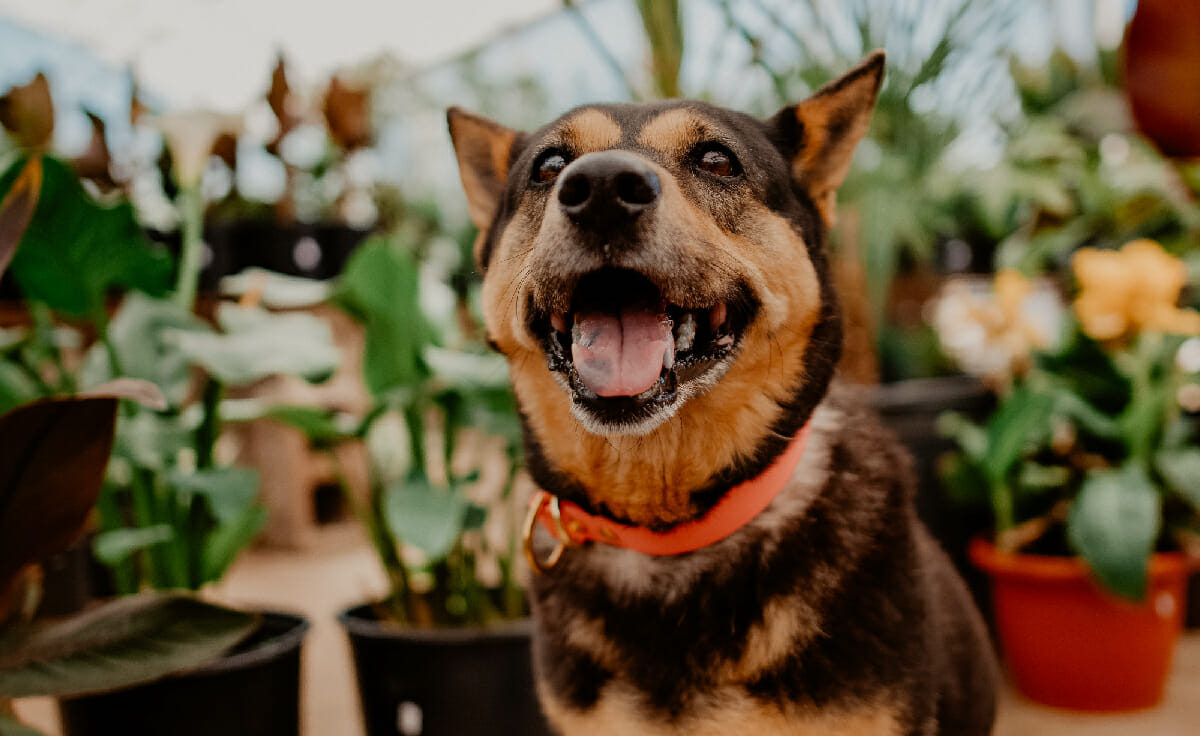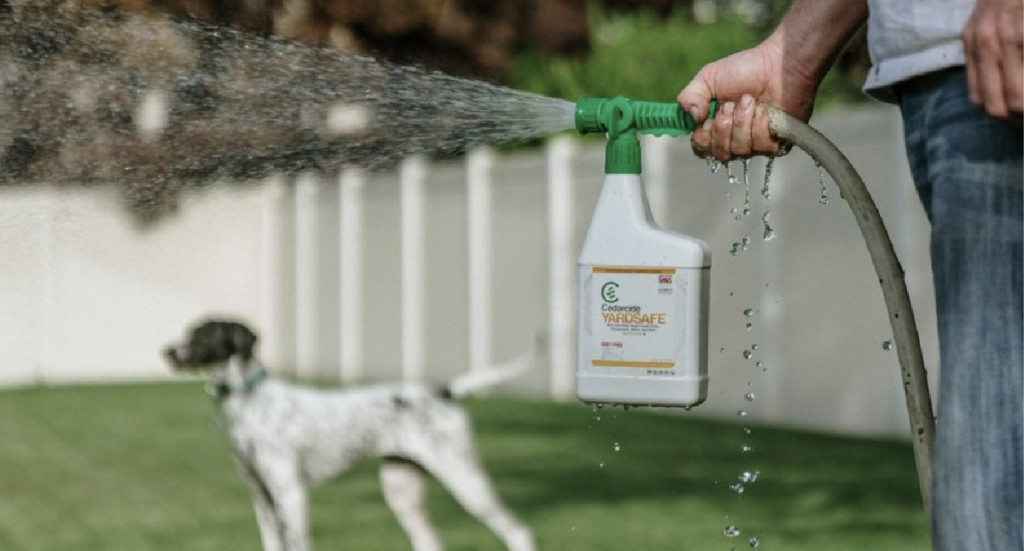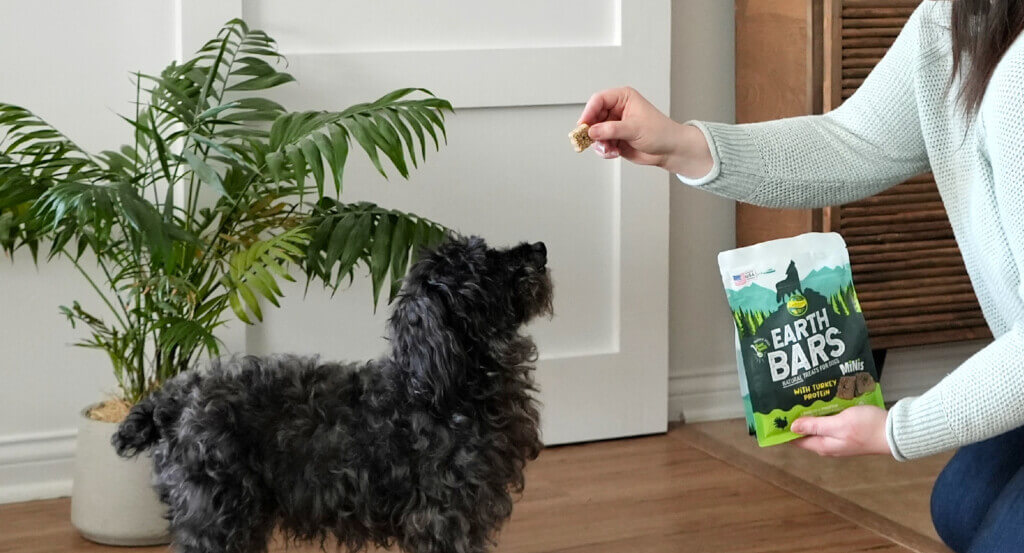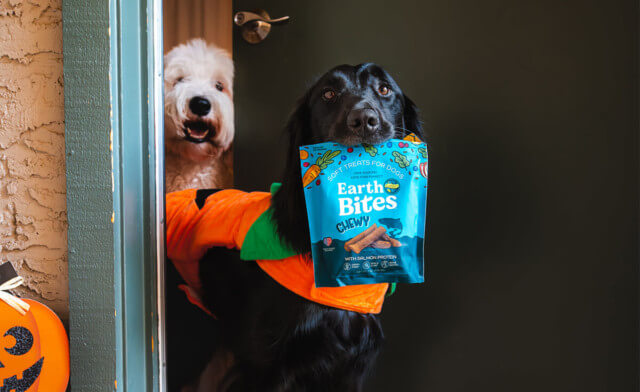Earthborn’s Ultimate Guide to Springtime Allergies and Safety
Spring has sprung and so have a lot of other things–fleas, seasonal allergies, and an occasional toxic-to-your-pet plant. While these things can definitely put a damper on your springtime fun you had planned, there’s also ways to help prevent them from ruining your adventures! We’ve put together this guide to help you navigate your pet’s springtime allergies, pesky fleas, toxic plants, and even give you a few ideas to add to your spring bucket list.

How to Manage Seasonal Allergies for Your Pets
We’ve waved winter goodbye, but that often means seasonal allergies are making their yearly appearance. Many dogs and cats can have seasonal allergies, putting a damper on your wishes to take advantage of the incoming warmer weather. However, what we as humans consider seasonal allergies isn’t necessarily the same as what seasonal allergies are like for our pets.
Common allergens and seasonal allergy causes can be pollen, but they can also be things like fleas or mites. The most common signs of dog allergies and signs of cat allergies are itching and scratching. Recurring ear infections and sneezing are also common in dog seasonal allergies. While there isn’t a lot you can do to control the pollen in the air, some methods such as more frequent baths with an anti-itch shampoo and allergy supplements may help give your pet some relief.
If you know anything about other allergies in pets, you might have noticed that these symptoms are also common in things like food allergies. For this reason, it’s important to take note of the time of year your pet is experiencing these symptoms and always consult with your vet to see if seasonal allergies are the culprit, or if you need to look into a dog food for allergies.
How to Get Rid of Fleas on Dogs and Cats
While your spring and summer adventures probably already have you on the lookout for ticks on your dog, flea prevention is another area of concern as the weather warms up. Thankfully, there are some great options to get your yard and pets ready for warm weather adventures.
Your backyard is probably the most common place your dog will find fleas since they spend so much time there, which is why a yard treatment for fleas will solve a lot of your problems. One of our favorite pet-friendly brands, Cedarcide, has a variety of flea prevention products but the one to look for to flea-proof your backyard is Yardsafe. A single quart covers up to 5,000 square feet and all you have to do is connect it to your yard hose and spray away. Not only does Yardsafe kill fleas, but it also takes care of ticks, mosquitoes, mites, and ants all without harmful chemicals. Instead, Cedarcide uses cedarwood oil so once you give your yard a good spray down it’s safe for your pets to enjoy immediately–no wait time necessary.

If your adventures take you beyond the limits of your yard, you’ll need some extra tools to keep your dog flea-free. For this, Cedarcide’s Flea + Tick Pet Brush is the way to go. Not only is it super convenient, but like Yardsafe it controls way more pests than just fleas. Simply fill the handle with either Cedarcide All-Purpose Bug Spray or Cedarcide Original and run the brush through your dog’s coat every five to seven days to keep fleas at bay.
As far as how to check for fleas, use a flea comb to check their fur especially on their head, neck, and hind end, as these are the most common places for fleas. Comb in the direction of your pet’s fur and check the comb as you go to detect any unwanted visitors. Even if you don’t find any actual fleas, keep an eye out for flea dirt as well (little black specs), as this could be a sign fleas are near and may be in your home.
While flea prevention is the best scenario, you might be in a situation wondering what to do if your dog has fleas. First, give your dog a flea bath with some flea and tick shampoo. Make sure to scrub really well and then follow up with a flea prevention method like one of the Cedarcide products from earlier. There are also things like chews or other topical treatments that can be used as a flea treatment for dogs or a flea treatment for cats and kittens. If you have any questions about which of these methods are right for your dog or cat, your best bet is to contact your vet.
If your dog does have fleas then it’s likely you have fleas throughout your home. It’s important to check things like beds, rugs, and carpeting to see if the fleas have made their way into your living space and to use something like Cedarcide Original to get rid of them so they don’t make a home on your pup again. Make sure to wash, vacuum, and spray everything–carpets, furniture, blankets, pet beds, door frames, and windows–as needed until the fleas are gone. If you haven’t already treated your yard for fleas, definitely do this as well to avoid a vicious cycle.
Plants Toxic to Cats and Dogs
House plants became all the rage when quarantine hit and people had time at home to spend tending to their plants. However, pet parents need to be especially careful about what plants they choose to keep in their homes alongside their dogs and cats. Indoor plants like the snake plant, pothos, lilies, monstera, and dieffenbachia are all toxic to cats according to The Spruce, and can cause serious symptoms like vomiting, liver failure, and even death. Dogs are also susceptible to plant poisoning from indoor plants like jade plant, aloe vera, and pothos. When it comes to outdoor plants, common things like tulips, hostas, lily of the valley, hyacinths, azaleas, and rhododendrons are all toxic to dogs if ingested.
If you’re looking to double-check your collection, the ASPCA has a comprehensive list of plants to help you make sure your house plants are safe for your pets.

Non-Toxic Plants for Cats and Dogs
If you’re looking for a list of safe options, there’s plenty of houseplants safe for cats and dogs! Plants like spider plant, orchids, bromeliad, ponytail palm, and haworthia are all great options to spruce up your living space without sacrificing your pet’s health. Pet-friendly outdoor plants include dill, rosemary, polka dot plants, and fennel and you can always add some color to your garden with dog-safe flowers like camellia, marigolds, fuchsias, magnolia bushes, snapdragons, and even sunflowers. With a little research, you’ll find it’s pretty easy to decorate your home with all sorts of fun plants and flowers that won’t cause a trip to the vet!
Cat and Dog Springtime Activities
If you’re looking for some fun springtime activities to do with your pet, the weather is finally getting warm enough to provide a variety of options. For some outdoor adventures, you can find all sorts of dog-friendly hikes in your state or spend a weekend camping with your pets. For these outdoor adventures, things like flea and tick prevention are super important, so make sure you’re packing all of your pet’s essentials to keep them protected. If hiking and camping isn’t your cup of tea, dog-friendly beaches are another great way to take advantage of the newfound nice weather with your pup.
If you’re looking for a bit more of a structured adventure, try out a dog agility course or another fun training class to keep your pup occupied in the nice weather and work on some training while you’re at it!
Have Fun!
Now go get out and enjoy the pretty weather–and don’t forget to pack along the Earthborn Holistic treats!




